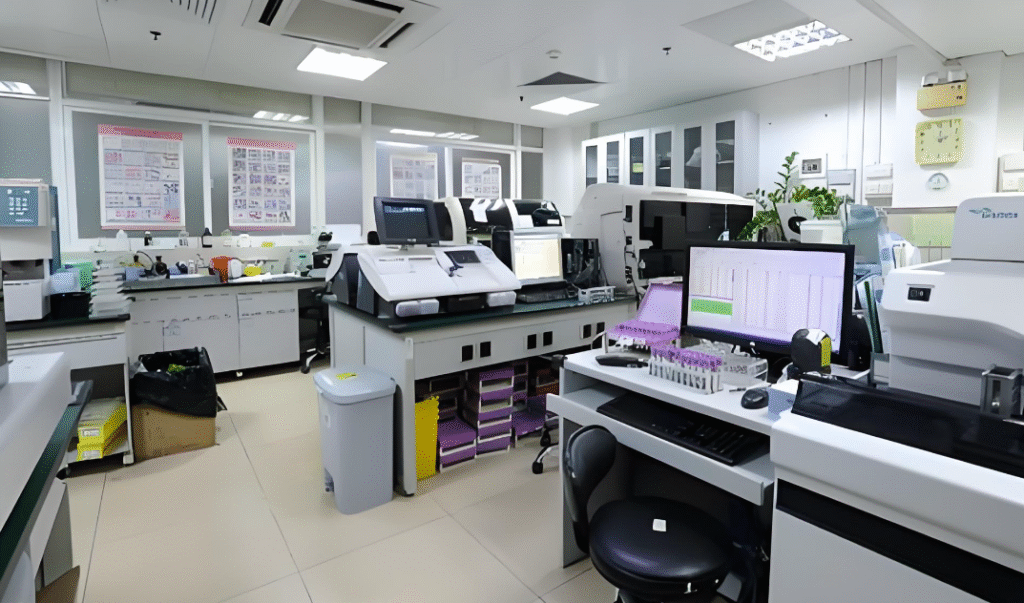What Is a Clinical Diagnostics Laboratory System and How Does It Work?
Introduction
A clinical diagnostics laboratory system is the backbone of modern healthcare, enabling accurate detection, monitoring, and prevention of diseases. From simple blood tests to complex genetic analysis, these systems combine advanced equipment, automation, and data management to ensure reliable diagnostic results.
Understanding how a clinical diagnostic lab system functions helps laboratories, hospitals, and healthcare providers improve efficiency, accuracy, and compliance in medical testing.
What Is a Clinical Diagnostics Laboratory System?
A clinical diagnostics laboratory system refers to an integrated network of instruments, processes, and software designed to perform medical tests on biological samples such as blood, urine, tissue, or swabs.
These systems are essential in:
- Disease diagnosis and prognosis
- Therapy monitoring
- Public health surveillance
- Research and clinical trials
The system is usually composed of multiple specialized instruments connected through a central data platform or Laboratory Information System (LIS).

Key Components of a Clinical Diagnostic Lab System
1. Sample Collection and Preparation
Every diagnostic process begins with collecting and labeling patient samples. Proper specimen handling and storage are vital to prevent contamination and ensure accurate results.
Equipment used: centrifuges, biosafety cabinets, sample transport systems.
2. Incubation and Controlled Conditions
Many biological tests require incubation at controlled temperatures and humidity levels.
A laboratory incubator ensures optimal conditions for microbial growth, enzyme reactions, or cell cultures.
Common incubator types include:
- BOD incubators for biochemical oxygen demand testing
- CO₂ incubators for cell and tissue culture
- Shaking incubators for aerobic bacterial growth
Temperature stability, uniform air circulation, and contamination prevention are key performance factors.
3. Analytical Instruments
This is the core of diagnostic testing. Instruments analyze the prepared samples to detect specific biomarkers or microorganisms.
Typical equipment includes:
- Clinical chemistry analyzers (for blood glucose, enzymes, electrolytes)
- Hematology analyzers (for complete blood count)
- Immunoassay analyzers (for hormone and infectious disease testing)
- PCR and molecular diagnostics systems (for DNA/RNA detection)
- Microscopes and imaging systems
4. Data Management and Laboratory Information System (LIS)
The LIS connects all instruments, automates data transfer, and manages test results, reports, and patient information.
Modern LIS solutions integrate with hospital systems (HIS/EMR), ensuring:
- Faster reporting
- Reduced human error
- Secure data storage
- Real-time monitoring and traceability
5. Quality Control and Calibration
Quality assurance is a continuous process in diagnostic laboratories.
Regular calibration of instruments (including incubators, analyzers, and pipettes) ensures:
- Consistency across tests
- Compliance with ISO 15189, CE, or FDA standards
- Reliable, reproducible results
Environmental factors—temperature, humidity, vibration—are also constantly monitored.
How Does the System Work? — Step-by-Step Workflow
- Sample Collection → Patient specimens are labeled with barcodes.
- Pre-Processing → Samples are centrifuged, aliquoted, or incubated.
- Analysis → Instruments perform specific assays or molecular tests.
- Data Processing → The LIS gathers and validates analytical data.
- Result Verification → Pathologists or lab specialists review data.
- Reporting → Final results are transmitted to physicians or hospital databases.
- Archiving → Data and samples are stored following compliance protocols.
This automated workflow minimizes human error and shortens turnaround times.
Benefits of a Modern Clinical Diagnostics Lab System
- ✅ High accuracy and reproducibility
- ⚙️ Automation reduces manual workload
- 🔒 Data integrity and regulatory compliance
- 🌡 Integrated environmental control systems
- 💻 Real-time tracking and analytics
By integrating advanced incubators, analyzers, and LIS software, laboratories achieve smarter workflows and faster diagnostics.
Future Trends in Diagnostic Laboratory Systems
The future of clinical diagnostics lies in digitalization, AI integration, and automation.
Emerging technologies include:
- IoT-connected incubators and analyzers for remote monitoring
- AI-based image analysis for faster interpretation
- Cloud-based LIS platforms for multi-site data sharing
- Green lab technologies emphasizing energy-efficient equipment
These innovations will continue to improve accuracy, reduce costs, and support personalized medicine.
Conclusion
A clinical diagnostics laboratory system is not just a collection of instruments—it is a cohesive ecosystem that transforms biological samples into actionable medical insights.
From incubators ensuring stable growth environments to analyzers and LIS managing complex data, every component plays a critical role in the healthcare chain.
Modern, automated diagnostic systems enable laboratories to deliver faster, more precise, and more reliable results, directly contributing to better patient outcomes.
Need reliable laboratory equipment?
Contact Labvv today for professional support and competitive prices.
👉 Contact Us | WhatsApp Us
